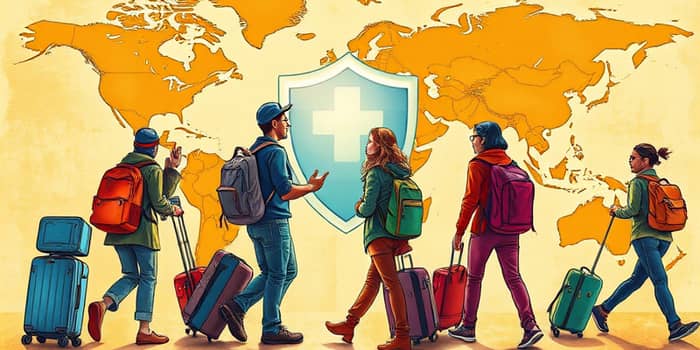
Travel today is more exhilarating than ever, yet it carries a degree of unpredictability that can test even the most seasoned explorer. From sudden health emergencies in a remote locale to unexpected trip cancellations due to natural disasters, uncertainties abound. By investing in comprehensive coverage, travelers can focus on the joy of discovery rather than the fear of financial burdens.
In this article, we explore market dynamics, coverage options, emerging innovations, and practical advice to help you make informed decisions and guarantee financial risk transfer and protection across the globe.
The travel insurance industry has experienced remarkable growth in recent years. In 2024, the global market was valued at $23.51 billion and is projected to surge past $50 billion by 2033, with some estimates reaching nearly $99 billion. A compound annual growth rate ranging from 10.77% to 17.4% reflects surging demand from international travelers seeking reassurance against unforeseen events.
Europe remains the largest regional market, driven by high travel volumes and stringent regulatory standards. North America and Asia-Pacific follow closely, buoyed by rising disposable incomes and expanding business travel. Emerging markets in Latin America and the Middle East & Africa show rapid percentage growth, reflecting expanding awareness of travel risks and rising medical costs abroad.
Modern travel policies offer a wide range of protections designed to address the most common—and costly—events. Understanding each component helps you match coverage to your specific itinerary and budget.
Many insurers also offer comprehensive medical emergency coverage tiers, which can include telemedicine services, translation and interpretation support, and 24/7 concierge assistance. Selecting optional add-ons, such as extreme sports coverage or higher baggage limits, tailors the policy to your unique travel style.
As travel becomes more ambitious—think off-the-grid safaris, polar expeditions, or multi-country tours—so do the stakes. In 2025, the average trip cost rose to $7,900, while 62% of travelers opted for policies covering $250,000 or more in medical expenses. Luxury journeys to Antarctica can exceed $16,000 per person, magnifying the potential financial loss of cancellations or emergencies.
Frequent disruptions such as extreme weather events, transportation strikes, or sudden political unrest underscore the importance of efficient assistance in crises. Credit card protections may offer limited coverage for cancellations or delayed flights, but they rarely extend to emergency evacuations or hospitalization abroad.
Data shows that travelers cite reduced anxiety and the confidence that help is a phone call away as the top reasons to purchase coverage. This sense of security fosters a deeper ability to engage with new cultures and experiences without hesitation.
The industry is undergoing rapid transformation through technology and strategic partnerships. Today, insurers leverage mobile-first apps, real-time policy issuance, and AI-driven customer service platforms to streamline the purchase and claims processes.
Personalization is another key trend. Embedded insurance solutions automatically present tailored quotes during flight or hotel bookings, reducing friction and ensuring that travelers never overlook protection. Blockchain-based claims management systems promise faster, more transparent payouts, while data analytics help underwriters design products that reflect specific customer profiles.
Partnerships between travel platforms and insurers mean bundled offerings, where a single booking includes flight, lodging, and coverage. This rapid adoption of digital platforms demonstrates the industry’s commitment to meeting modern traveler expectations for convenience and speed.
Filing a claim is most successful when you follow insurer guidelines precisely. Retain all receipts, medical reports, police statements, and travel documents. Submit claims within the specified deadlines—often 30 to 60 days after an incident.
Regulations differ by jurisdiction, but reputable insurers provide clear instructions, online portals, and dedicated support lines. In the event of a dispute, most policies include privacy policies and dispute resolution mechanisms to protect your rights.
Travel insurance is more than a policy—it’s an investment in personalized embedded insurance solutions that safeguard both your health and your wallet. Whether you’re wandering cobblestone streets in Europe, trekking through jungle trails, or negotiating new business deals overseas, knowing you’re protected allows you to seek out life’s richest experiences without hesitation.
In an era of rising medical costs, frequent disruptions, and complex itineraries, acquiring the right coverage is not a discretionary expense but an essential component of any trip. Embrace the security that a comprehensive travel policy provides and transform uncertainty into confidence on every journey.
References













